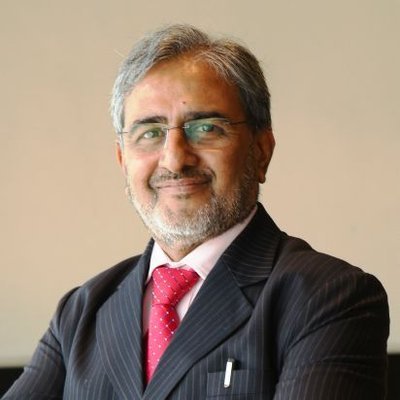"We should immediately eliminate Mother to Child transmission of HIV": Dr Ishwar Gilada, President, ASI
March 23, 2023 | Thursday | News | By Bhagwati Prasad
The AIDS Society of India (ASI) is a nation-wide network of HIV medical experts and researchers
Speaking on the sidelines of the recently held mega event, the 14th National Conference of AIDS Society of India (ASICON), Dr Ishwar Gilada, President, AIDS Society of India (ASI) and Governing Council member of International AIDS Society (IAS), said, "Indian pharma's capacity to produce generic antiretrovirals and supply them globally had resulted in major successes for Acquired Immunodeficiency Syndrome (AIDS) fight worldwide as 92 per cent of Human Immuno-Deficiency Virus (HIV) medicines are from Indian pharma companies". The event started from March 17, 2023 in New Delhi and concluded on March 19, 2023.
Today, the most commonly used drugs in the combination of tenofovir+lamivudine+dolutegravir+ efavirenz, is the widely prescribed standard first line medication to treat HIV. With the advancement in therapies and drugs, the therapy cost is today reasonably low to as less as Rs 1500 per month which can go up to a maximum of Rs 2,500 per month for first line therapy which has made the HIV treatment very affordable and accessible. Some of the major companies in manufacturing medicines for HIV are Emcure, Hetero and Laurus Labs.
Global agencies like the UN, WHO, UNAIDS devise goals of “TasP”, “Test and Treat", #endAIDS only on the strength of India’s contribution through its pharma that is responsible for treating 92 per cent of People Living With HIV (PLHIV) globally.
India’s Pharma industry also responded resiliently to the global needs of some of the medicines used in the treatment of COVID-19. Industry could respond to various country’s urgent appeals for supplies of products like Remdesivir, Favipiravir, Azithromycin, Doxycycline, Paracetamol, Hydroxychloroquine and many others.
During FY22, the Indian Pharmaceutical Industry, apart from facing delay in site inspections and new site approvals by the USFDA, also faced pricing pressures, frequent shutdowns, global supply chain interruptions, and a sluggish manufacturing sector.
“If we look back on HIV response in the past decades, it sends shivers down our spine to even imagine what would have happened if Indian generic manufacturers had not stepped in with affordable life saving medicines, and if we had to depend on the mercy of Big Pharma of the Global North. Thankfully, this is not the situation due to the stellar leadership demonstrated by Indian pharma. We have the time-tested and proven capacity to manufacture HIV diagnostics, medicines and robust supply chain mechanisms to deliver them worldwide sustainably,” informed Dr Ishwar Gilada.
According to the Government of India’s National AIDS Control Organisation 2022 report, annual new HIV infections and AIDS-related deaths continue to decline nationally. Between 2010 and 2021, new infections declined by 46 per cent and AIDS-related mortality declined by 76 per cent. The goal to reduce new HIV infections by 2025 is 80 per cent and clearly, we need to do much more to turn the tide.
While the overall adult prevalence remains low (0.21 per cent in 2021), HIV prevalence among high-risk groups and the bridge population remains very high. HIV prevalence among migrants is four times, among truckers five times, among inmates in central jails and female sex workers 9 times, among men who have sex with men (MSM) 16 times, among hijra/transgender people 18 times and among people who use drugs 43 times of the overall adult HIV prevalence.
“This divide shows our indifference to vulnerable populations by depriving them of the fruits of scientific developments. India missed meeting the target of “zero discrimination by 2020”, now shifted to 2030, albeit with a caveat, “less than 10 per cent discrimination by 2030”. This proves, we are born discriminatory and will remain so,” Dr Ishwar Gilada explained.
In the journey towards #endAIDS, one of the earlier milestones has to be elimination of mother to child transmission (MTCT) of HIV, as that doesn’t even need a change in behaviour. India is yet to achieve the goal.
“Coverage of pregnant women who receive medicines to prevent MTCT is 64 per cent. Vertical transmission rate including during breastfeeding is 24.3 per cent. This is another “missed opportunity” which we truly cannot afford to ignore if we are to #endAIDS by 2030. Rather, we should immediately eliminate MTCT that is now part of the WHO goal of triple elimination—elimination of mother-to-child transmission of HIV, syphilis and hepatitis-B. Amidst calls to #endAIDS globally, let us remember that business as usual will fail us. If current trends continue, more than 1.2 million people will be newly infected with HIV in 2025, three times more than the pre-set target of 370,000,” Dr Ishwar Gilada concluded.
Bhagwati Prasad









